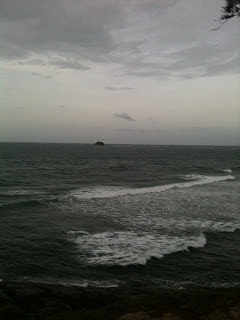PEOPLE OF SABAH
Malaysia is a multi-national country, and it is even more so in Sabah. With 33 ethnic groups in a population of three million that communicates in over 80 ethnic dialects, the different races here in East Malaysia are even more diversified compared with West Malaysia. Sabah is really a melting pot of cultures and people. This harmony can be seen playing out in many parts of Sabah, where people of different races and religions can be seen happily chatting together at the local kopitiams. Inter-marriage among the races are the highest in Sabah, where the difference of bumiputra (natives or “Son of earth” in Sanskrit) and non-bumi (non-natives) are becoming quite obscure. Nevertheless, Sabahans also are recognised to be one of the most friendliest people in Malaysia and most Sabahans are multilingual and are able to speak at least three languages - Bahasa Malaysia - the national language - English and their mother tongue.
Ethnic Tribes
The Kadazandusun is the largest ethnic group in Sabah, making up almost 30% of the population. The vast majority of Kadazandusuns live in the hills and upland valley, where they till their lands with padi and vegetables. “Pesta Kaamatan” or Harvest festival is the most celebrated holiday in the calendar year for the Kadazandusun. “Unduk Ngadau” or Harvest Beauty Queen, Rice wine and traditional dances are the highlights of the festival which is celebrated annually on the 30th & 31st of May. Although the rites and customs of the Pesta Kaamatan are practiced by the Native tribes, all Sabahans join in the celebrations one way or the other. The true meaning is to honor the Rice Spirit, by giving thanks for a bountiful harvest.
Bajau is the second largest ethnic group in Sabah, where they are seafaring people and live their life off the sea, and fishing is their main livelihood. Many Bajaus in Sabah can be found on the east coast, and the Bajau of Kota Belud is famous for their house riding skill, which earns them the tag as "Cowboys of the East". Bajaus are expert horsemen - this is their main claim to fame in Malaysia, where horse riding has never been widespread anywhere else. The Bajau people are also well known for weaving and needlework skills.
Other indigenous ethnic groups include the Bisaya, Brunei Malay, Bugis, Kedayan, Lotud, Ludayeh, Minokok, Rungus, and Suluk. There are still many smaller groups that are not mentioned here.
The ubiquitous Chinese make up about 20% of Sabah population. Many of them can be found reside in major towns and cities, opening shops, kopitiams, and trading post.
Languages Malay (Bahasa Malaysia) is the national language spoken across ethnicities, although the spoken Sabahan dialect of Malay differs much in inflection and intonation from the West Malaysian version. The Sabahan accent of Malay is actually what Dewan Bahasa dan Pustaka endorses, which is Baku. Sabah also has its own unique slang for many words in Malay, mostly originated from indigenous or Indonesian words. English, Filipino specially Chavacano, Mandarin as well as Hakka and Cantonese are widely understood. In addition, indigenous languages such as Kadazan, Dusun, Bajau and Murut have their own segments on state radio broadcast. |







